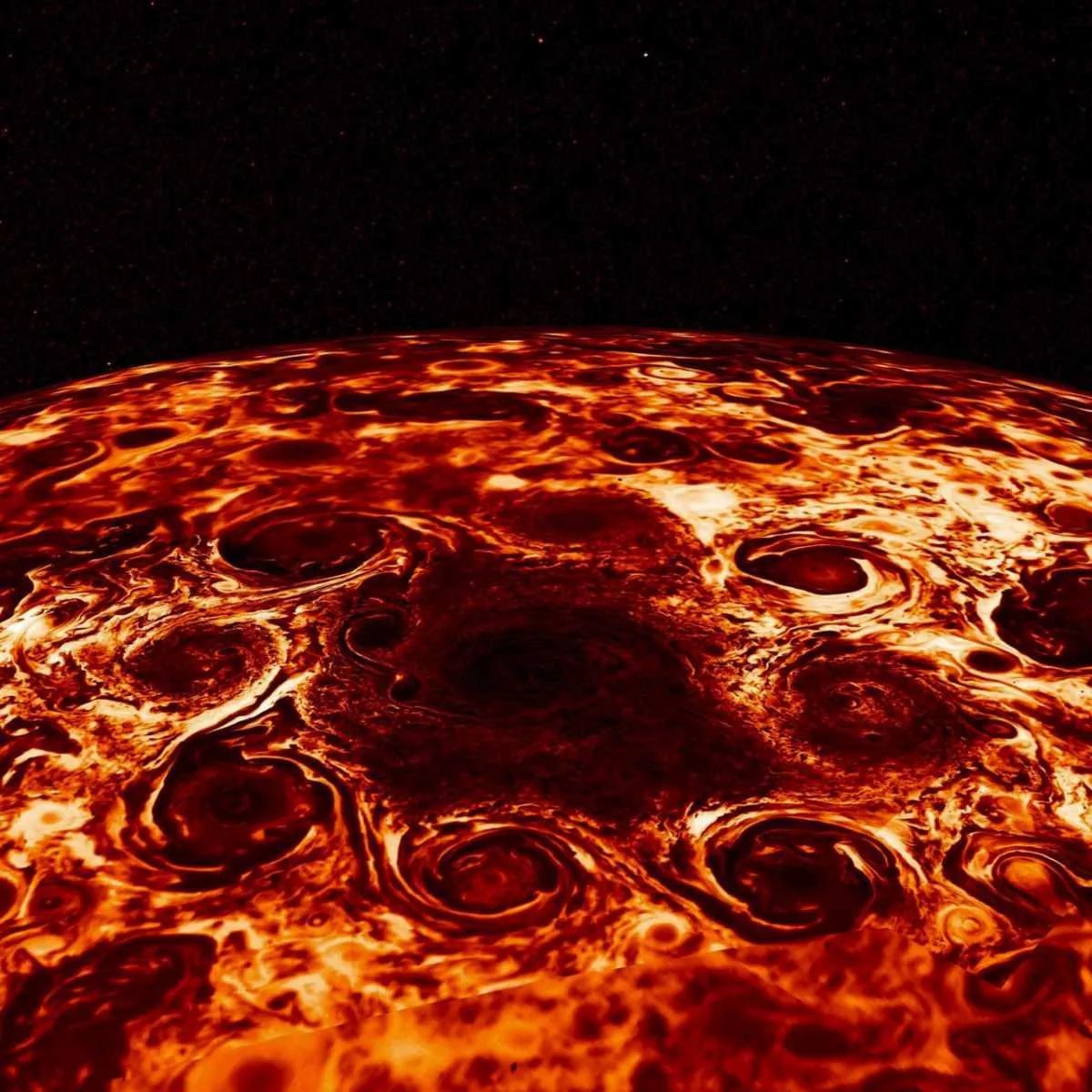Jupiter’s atmosphere is one of the most turbulent places in the Solar System, and thanks to the spacecraft Juno, we know that the poles are home to gigantic, persistent cyclones that rotate around areas of low pressure without dispersing. The mystery of why Jupiter’s cyclones have kept so stable has intrigued scientists since they were first observed in 2016, as the number of cyclones remains fixed; eight at the north pole and five at the south.
These clusters of large cyclones are up 5,000km wide – that’s wider than the continental United States – and each is associated with intermediate (around 500 to 1,600km wide) and smaller-scale vortices and filaments around 100km wide.
Now, a new study published in Nature Physics has provided evidence that these massive Jovian cyclones at the planet’s poles are sustained by the same forces that power our ocean vortices here on Earth. In physics, because both liquid and gases can flow, they are both considered to be fluids.
And, just like on Earth, the hotter, less dense air from deep in the gas giant’s atmosphere is more buoyant, and so rises, where it condenses to form clouds, while cooler and denser air flows downwards. On Jupiter, the rapidly rising air within these clouds acts as an energy source, driving energy transfer and feeding the large circumpolar and polar cyclones, in a process called moist convection.
“When I saw the richness of the turbulence around the Jovian cyclones with all the filaments and smaller eddies, it reminded me of the turbulence you see in the ocean around eddies,” said study lead author and physical oceanographer Lia Siegelman, a postdoctoral fellow at the Scripps Institution of Oceanography at the University of California San Diego (UCSD). “These are especially evident on high-resolution satellite images of plankton blooms for example.”

By analysing an array of detailed infrared images sent back by Juno, currently in a polar orbit around the gas giant, Siegelman and her colleagues were able to confirm the widely held hypothesis that these cyclones in Jupiter’s north polar region were formed through moist convection.
They measured temperature, calculated wind speed, and tracked cloud movement, and comparing these measurements to data interpreted from infrared images of cloud thickness (thin clouds corresponding to hot regions, thick clouds to cold regions), were able to map these massive storms.
Even though at a much larger scale than here on Earth, Siegelman says that understanding Jupiter’s energy system could help to highlight energy routes at play on our own planet: “To be able to study a planet that is so far away and find physics that apply there is fascinating,” she said. “It begs the question, do these processes also hold true for our own blue dot?”
Juno is currently scheduled to continue operations until 2025 and is expected to make several more fly-bys before then.
Read more about Jupiter: